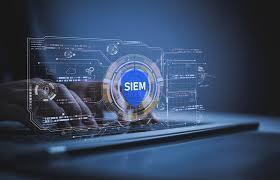SIEM vs SOAR vs XDR: Choosing the Right Security Platform for Your Organization

In today’s fast-paced digital world, cyber threats are evolving faster than security teams can keep up. From ransomware to insider attacks, organizations face a relentless flood of alerts, data, and sophisticated threats that demand faster, smarter responses.
To manage this growing complexity, enterprises are turning to advanced security technologies such as SIEM (Security Information and Event Management), SOAR (Security Orchestration, Automation, and Response), and XDR (Extended Detection and Response). While these tools often overlap, each plays a distinct role within the modern Security Operations Center (SOC). Understanding how they differ — and complement each other — is crucial for building an effective cyber defense strategy.
1. SIEM:
What Is SIEM? SIEM is one of the cornerstones of enterprise cybersecurity. It collects, aggregates, and analyzes log data from across the IT ecosystem — including servers, endpoints, firewalls, and cloud applications — to identify and investigate potential threats.
Key Capabilities:
· Centralized Data Collection: SIEM integrations enable log aggregation from multiple sources into one platform.
· Real-Time Threat Detection: Uses rule-based correlation and analytics to flag suspicious behavior.
· Compliance Reporting: Simplifies meeting regulatory requirements by maintaining detailed audit trails.
· Incident Investigation: Provides dashboards and alerts to support forensic analysis.
Examples: Splunk Enterprise Security, IBM QRadar, Microsoft Sentinel, ArcSight.
Limitations:
SIEMs can generate excessive alerts, leading to analyst fatigue. Their rule-based detection may miss emerging or unknown threats.
In summary: SIEM delivers centralized visibility and detection but offers limited automation or response capability.
2. SOAR:
What Is SOAR? SOAR builds upon SIEM by focusing on automation, orchestration, and operational efficiency. It connects various security tools, automates repetitive tasks, and standardizes incident response workflows — allowing SOC teams to respond faster with fewer manual steps.
Key Capabilities:
· Automation: Executes routine tasks automatically — such as blocking malicious IPs or disabling compromised accounts.
· Orchestration: Integrates and coordinates tools like SIEM, EDR, and firewalls to act in concert.
· Case Management: Provides dashboards for tracking incidents and collaboration.
· Playbooks: Defines consistent, repeatable workflows for responding to common threats.
Examples: Palo Alto Cortex XSOAR, Splunk SOAR, IBM Resilient, Swimlane.
Limitations:
SOAR relies on integrations and pre-built playbooks; it doesn’t detect threats on its own but rather acts on alerts generated by SIEM or EDR.
In summary: SOAR enhances operational efficiency by automating and orchestrating response — reducing human workload and response time.
3. XDR:
What Is XDR? XDR (Extended Detection and Response) represents the evolution of detection and response technologies. It unifies multiple security layers — endpoints, networks, cloud workloads, email, and identity — within a single platform to deliver cross-domain visibility and automated response.
Key Capabilities:
· Cross-Layer Visibility: Correlates telemetry from endpoints, network traffic, and cloud environments.
· AI-Driven Detection: Uses behavioral analytics and machine learning to uncover sophisticated or hidden threats.
· Automated Response: Acts across environments — for example, isolating an endpoint while blocking a domain at the same time.
· Simplified Operations: Reduces tool sprawl by consolidating detection and response capabilities into one console.
Examples: CrowdStrike Falcon XDR, Microsoft Defender XDR, Trend Micro Vision One, Palo Alto Cortex XDR.
Limitations:
Many XDR platforms are vendor-specific, limiting flexibility and integration with third-party tools.
In summary: XDR offers unified detection and automated response across multiple attack surfaces — making it ideal for proactive, integrated defense.
4. SIEM vs SOAR vs XDR: A Comparative Snapshot
|
Feature |
SIEM |
SOAR |
XDR |
|
Primary Focus |
Data collection, monitoring, and correlation |
Automation and orchestration |
Unified, multi-layer detection and response |
|
Detection Method |
Rule-based correlation |
Based on input from SIEM/EDR |
AI and behavioral analytics |
|
Response Capability |
Limited/manual |
Automated via playbooks |
Automated and intelligent |
|
Integration Needs |
High |
Very high |
Moderate (native integrations) |
|
Deployment Complexity |
Moderate to high |
High |
Low to moderate |
|
Best For |
Organizations needing visibility and compliance |
SOCs seeking automation and efficiency |
Enterprises wanting unified, AI-driven defense |
5. Choosing the Right Platform for Your Organization
Your choice between SIEM and SOAR with XDR depends on your security maturity, resources, and objectives:
· For visibility and compliance: Start with SIEM. It provides centralized log management and helps satisfy audit requirements.
· For automation and efficiency: Deploy SOAR. It reduces manual workload, streamlines workflows, and accelerates response times.
· For unified, intelligent protection: Adopt XDR. It delivers integrated detection and response across endpoints, cloud, and networks.
In practice, these technologies are most powerful when combined:
· SIEM serves as the visibility and data foundation.
· SOAR acts as the automation and response engine.
· XDR provides cross-domain detection and AI-driven insight.
Together, they form a cohesive, adaptive security architecture capable of detecting, analyzing, and responding to threats at machine speed.
Conclusion: Unifying Detection, Automation, and Intelligence
In 2025’s threat landscape, no single tool can defend the enterprise alone. SIEM, SOAR, and XDR each bring unique strengths — from centralized visibility to intelligent automation and cross-environment response.
The most resilient organizations integrate these capabilities strategically, creating a unified security operations framework that is proactive, intelligent, and scalable.
Ultimately, success isn’t about choosing one technology over another — it’s about empowering your security team to respond faster, smarter, and with confidence in the face of ever-evolving cyber threats.
- Art
- Causes
- Crafts
- Dance
- Drinks
- Film
- Fitness
- Food
- Oyunlar
- Gardening
- Health
- Home
- Literature
- Music
- Networking
- Other
- Party
- Religion
- Shopping
- Sports
- Theater
- Wellness



